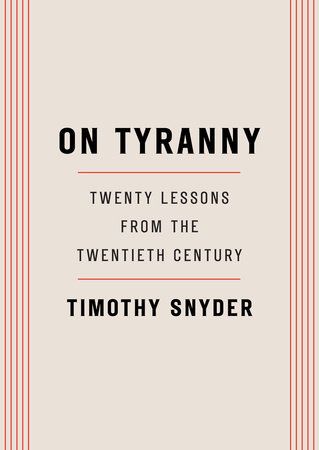Most enduring stories and plot lines evolved to depict ancient biological dramas like sibling rivalry, the hero defeating the monster, or the struggle for purity. They excel at conveying the dynamics of families, romances, or wars. But bureaucratic power works differently, so artists struggle to dramatize it compellingly. Tips for thinking about bureaucratic power:
- Look for the obscure legal loopholes and procedural details that enable real-world power plays, not just personalities and rhetoric
- Pay attention to unsung bureaucratic achievements like public sanitation that make civilization possible
- Appreciate satires like Catch-22 or The Big Short that expose absurdities of bureaucratic logic
Section: 1, Chapter: 3
Harari illustrates the power of stories to shape perception with the examples of the World War 1 carrier pigeon Cher Ami and the figure of Jesus Christ. Though the details are murky, Cher Ami became the subject of a heroic tale that captured public imagination and made him the world's most famous bird.
Even more dramatically, after his death, Jesus was rebranded from an obscure preacher into the divine Son of God, an idea that changed history and created a vast network of believers. In both cases, the story about the figure became far more impactful than the original facts.
Section: 1, Chapter: 2
Harari explores the inherent fallibility of AI systems, drawing parallels with historical information networks. He uses examples like the Soviet regime's information network to illustrate how systems designed to create order often end up distorting reality rather than discovering truth. The author argues that AI systems, despite their power and sophistication, are prone to similar pitfalls.
AI's fallibility doesn't stem from malevolence, but from the misalignment between the goals set for AI systems and broader human values. Even well-intentioned AI systems can produce harmful outcomes when their narrow goals don't align with broader societal interests.
Section: 2, Chapter: 8
The Bible is often seen as the direct and unambiguous "word of God." But the canonical Hebrew Bible only emerged after centuries of debate among rabbis over which texts to include. Different sects disagreed for generations - for example, the Dead Sea Scrolls include the Book of Enoch, while the Ethiopian Bible contains books left out of the Catholic and Protestant canons. Rabbis also argued over the interpretation and significance of key passages.
The Bible's authority relies on this human process of curation, even as that process has been largely forgotten.
Section: 1, Chapter: 4
In ancient Assyrian society, loan documents were not just records of debts - they created and sustained the debts. A loan was considered active as long as the clay tablet "lived." If the tablet was destroyed when the debt was repaid, the debt died too, even if the borrower still owed money.
But if a borrower had repaid and the tablet still existed, he was out of luck - the document trumped reality. This power of documents to create facts on the ground still shapes our world today, from property rights to national borders.
Section: 1, Chapter: 3
In the 1990s, Western leaders optimistically assumed trade and globalization would inevitably spread democracy to Russia and China. They underestimated how:
- Russian "capitalism" was designed from the start to favor insiders, with no real free markets. Wealth came from connections and theft, not innovation.
- Chinese companies, even in the era of economic opening, still ultimately served the interests of the Communist Party and its hold on power.
In practice, Western trade and investment often fueled kleptocracy and dictatorship rather than reforming them. But few wanted to acknowledge the moral hazards at the time.
Section: 1, Chapter: 1
In the late 1960s, Austrian and West German capitalists met with Soviet communists to discuss building gas pipelines from the communist East to capitalist West. West German Foreign Minister Willy Brandt believed deeper economic ties would make future military conflict unthinkable and promoted "change through rapprochement" (Wandel durch Annäherung).
Not everyone agreed. U.S. presidents Nixon, Carter and Reagan worried the pipelines would enrich the Soviets, increase European energy dependence on Moscow, and empower the regime the West was supposed to be countering. But Brandt's policy largely prevailed, morphing into "change through trade" (Wandel durch Handel) after the Cold War.
Section: 1, Chapter: 1
Following the 1989 Tiananmen Square massacre, the Chinese Communist Party sought to eliminate the democratic "spiritual pollution" that spurred protesters. As the internet emerged, it constructed a pervasive system of online controls far exceeding a mere "Great Firewall":
- Social media is engineered for built-in surveillance
- Vague laws criminalize posting anything "endangering national security" or "detrimental to the honor and interests of the state"
The goal is to guide mass online discussion, marginalize dissent, and squelch organizing - a model gaining traction among autocracies worldwide.
Section: 1, Chapter: 3
As deputy mayor of St. Petersburg in the early 1990s, Vladimir Putin oversaw schemes to steal city funds and launder money through shell companies in Europe, enabled by Western banks and lawyers. In one case, his partners registered the St. Petersburg Real Estate Holding Company in Germany, took it public, then used it to launder funds before German police finally raided it in 2003.
The political system that became Putinism emerged from the nexus of the KGB's experience with clandestine finance and the amorality of the international business community. Even as Western leaders preached "rule of law" to Russia, Western enablers helped build the opposite.
Section: 1, Chapter: 1
When former coup leader Hugo Chávez was elected Venezuela's president in 1998, he vowed to replace the corrupt old elite. But when his chief of police first presented evidence of graft by Chávez allies, the president fired the whistleblower.
The incident taught officials that loyalty would be rewarded with impunity to steal. Over time, Venezuela's Bolivarian socialist system enabled massive embezzlement, siphoning billions from the state oil company PDVSA into foreign accounts. Currency manipulation spawned a "boligarchy" of regime cronies who exploited distorted exchange rates. As in Russia, corruption metastasized from an aberration into the regime's operating system.
Section: 1, Chapter: 2
In his first years as president, Putin paid lip service to democracy, declaring in speeches that only a democratic state could balance interests and ensure rule of law, free elections and human rights in Russia.
In practice, he constructed a Potemkin democracy designed to fool foreigners while allowing him to monopolize power. Elections featured no real competition. The market operated only within Kremlin-set limits. Putin could destroy any company that crossed him, as the expropriation of Yukos by state-owned Rosneft showed. Yet Rosneft still attracted major Western investment, showing the willful blindness of those who profited from the charade.
Section: 1, Chapter: 1
The scale of graft under Chávez and successor Nicolás Maduro is astounding:
- Of $1.2 trillion in oil revenues during the Chávez era, as much as $300 billion was reportedly stolen
- Transparency International documented over 125 cases of corruption at PDVSA, with 17 exceeding $1 billion each
- Investigations from Andorra to Switzerland revealed billions in accounts linked to Venezuelan officials
- U.S. authorities charged Venezuelan elites with laundering billions through American banks and real estate
This kleptocratic extraction helped tank Venezuela's economy, sparking humanitarian catastrophe and mass exodus. But high oil prices and lingering sympathy for Chávez's socialist rhetoric abroad helped delay international reckoning.
Section: 1, Chapter: 2
As Venezuela's crisis deepened under Maduro, the regime's salvation came from fellow autocracies:
- Russia provided bailouts, arms, and propaganda support. Rosneft took over PDVSA's defaulted assets.
- China offered billions in loans to help circumvent U.S. sanctions, in exchange for oil.
- Cuba sent security advisers to help contain unrest and track dissidents.
- Turkey facilitated illicit gold sales to generate revenue.
- Iran shipped gasoline and parts to restore Venezuela's collapsing refinery infrastructure.
This solidarity, based on shared authoritarianism rather than ideology, helped the unpopular Maduro cling to power despite Western pressure, hyperinflation, and chronic shortages.
Section: 1, Chapter: 2
Certain states play an oversized role as nodes in the infrastructure of global kleptocracy:
- "Bridging states" like the UAE or Turkey have legal systems compatible with global finance but also lax regulation that attracts illicit wealth. They help kleptocrats spend and store their gains.
- Offshore "financial secrecy" and "tax haven" jurisdictions extend into putatively well-regulated democracies like the UK and US thanks to anonymous shell companies and trusts.
- Weak-governance states on the periphery of the democratic world, like Kyrgyzstan or Serbia, serve as transshipment points for autocratic commerce, e.g. helping Russian exporters circumvent sanctions.
The influx of authoritarian capital can spark a vicious cycle, empowering local elites to erode democratic safeguards, ensnaring whole societies in cross-border corruption networks centered on major autocratic powers.
Section: 1, Chapter: 2
With the invention of the transistor, the challenge shifted to manufacturing them reliably and at scale. William Shockley, driven by ambition and a desire for wealth, established Shockley Semiconductor in California. However, his poor management skills and toxic work environment led to the departure of eight talented engineers - The Traitorous Eight - who would go on to found Fairchild Semiconductor and play a pivotal role in the development of Silicon Valley.
Section: 1, Chapter: 3
Jack Kilby, an engineer at Texas Instruments, focused on simplifying the complexity of wiring multiple transistors together. In 1958, he developed the concept of the "integrated circuit," where multiple transistors could be built on a single piece of semiconductor material, eliminating the need for extensive wiring. This invention, later known as the "chip," marked a significant breakthrough in miniaturization and efficiency.
Section: 1, Chapter: 3
The emergence of fabless chip design firms has been a transformative force in the semiconductor industry. These companies focus on chip design and outsource manufacturing to foundries, allowing them to avoid the enormous capital expenditures associated with building and operating fabs. This model has lowered entry barriers and enabled a new wave of innovation, with startups pioneering specialized chip designs for various applications.
One notable example is Nvidia, a leading designer of graphics processing units (GPUs) that have become essential for computer graphics, gaming, and artificial intelligence. Nvidia's success demonstrates the viability of the fabless model, enabling the company to focus on its core competency of chip design and leverage the manufacturing expertise of foundries like TSMC.
Section: 6, Chapter: 36
South Korea's rise as a semiconductor powerhouse, exemplified by Samsung, demonstrates the complex interplay between global competition and strategic partnerships. Samsung's founder, Lee Byung-Chul, recognized the opportunity presented by the U.S.-Japan DRAM wars of the 1980s and made a bold bet on semiconductors. With government support and access to cheap capital, Samsung entered the market and licensed technology from struggling American firms like Micron.
Ironically, Silicon Valley supported the rise of Korean DRAM producers as a way to counter Japan's dominance. This strategy, based on the principle of "my enemy's enemy is my friend," aimed to create a more balanced market and reduce Japan's threat to the U.S. chip industry. South Korea's success was also aided by the U.S.-Japan trade agreement, which limited Japanese DRAM exports and allowed Korean firms to sell more chips at higher prices.
Section: 4, Chapter: 23
World War II, a conflict characterized by industrial might, left an indelible mark on the lives of individuals like Akio Morita, Morris Chang, and Andy Grove. As the war ended, a new era of technological advancement dawned, with inventions like rockets and radars hinting at a future where computing power would play a crucial role. Akio Morita, having worked on heat-seeking missiles, recognized the potential of machines that could "think" and solve mathematical problems.
Section: 1, Chapter: 1
Ammonites, a group of marine mollusks, inhabited the seas for over 300 million years. They survived several mass extinctions, but finally succumbed during the End-Cretaceous event 66 million years ago. Ammonites came in a dizzying array of shapes and sizes, from tiny species to 6-foot giants.
They were abundant, diverse, and highly successful - until they rather abruptly disappeared from the fossil record. Their sudden decline, coinciding with the extinction of the dinosaurs, belies the notion that mass extinctions unfold gradually. Instead, they demonstrate that long-thriving groups can be rapidly eliminated when conditions change faster than they can adapt.
Section: 1, Chapter: 4
"The present is the key to the past."
This famous maxim encapsulates geologist Charles Lyell's uniformitarian view. He argued the same gradual geological processes observable today, like erosion and sedimentation, shaped Earth's features over immense time. This contrasted with Cuvier's catastrophism. Lyell claimed the apparent "revolutions" in the fossil record simply reflected its incompleteness. Species extinctions occurred piecemeal, not en masse. Lyell's "Principles of Geology" was hugely influential, though he was ultimately wrong about the continuity of the fossil record and the ability of modern causes to explain mass extinctions.
Section: 1, Chapter: 3
In revolutionary France, naturalist Georges Cuvier studied fossilized elephant and mastodon bones, including specimens discovered in North America. He recognized that their anatomy was distinct from living species. This led him to propose that some species had gone extinct - a radical idea at the time. He identified the mastodon, mammoth, giant ground sloth, and more as "lost species." Cuvier envisioned a pre-human world populated by unfamiliar creatures that had been wiped out by sudden catastrophes.
His work established extinction as a scientific fact and the existence of a "former world" before humans, though his catastrophist views were later overturned.
Section: 1, Chapter: 2
The sequencing of the Neanderthal genome has revolutionized our understanding of this extinct human relative. Scientists have discovered that the two species interbred, challenging the notion of a strict replacement model.
Key findings include:
- Non-African humans carry 1-4% Neanderthal DNA, indicating significant interbreeding
- This admixture likely occurred 50,000-60,000 years ago as modern humans expanded out of Africa
- Neanderthals possessed the capacity for symbolic thought and complex culture, as evidenced by their genome and archaeological remains
The Neanderthal genome project underscores the complexity of human origins and the blurry boundary between modern humans and our archaic cousins. It also raises provocative questions about what genetic traits made Homo sapiens uniquely successful.
Section: 1, Chapter: 12
America's founding story is deeply intertwined with the age of imperial mobility - the centuries when Europeans, powered by technological and immunological advantages, could conquer and expand globally. Key examples:
- The American Revolutionary War emerged from tensions in the British Empire after the Seven Years' War
- After independence, America expanded rapidly by seizing land from Natives and Mexico, taking the place of European imperial powers
- Southern plantation owners' wealth and political power relied on enslaved African labor
- The Founders had tremendous mobility to settle newly conquered lands, at the expense of Native displacement
Section: 1, Chapter: 3
The author nearly died in a hospital because doctors dismissed a Black friend who advocated for him, showing how racism makes everyone less free. Other examples:
- The National Housing Act of 1934 only guaranteed mortgages for white families, leading to segregation
- The Wagner Act of 1935 allowed unions to exclude Black workers
- Mass incarceration disproportionately imprisons Black men, teaching white people to define freedom negatively as not being arrested
When white people ignore the bodies and perspectives of Black people, they lose key knowledge for their own freedom and survival. Racism leads people to support policies against their own interests.
Section: 1, Chapter: 1
The rise of American mass incarceration in the late 20th century created a new system of racial control that severely limits social mobility. Consider:
- The US imprisons over 2 million people, the most in the world, disproportionately Black men
- 1 in 3 Black men born in 2001 can expect to be imprisoned, vs 1 in 17 white men
- Spending time in prison severely limits employment, housing, education, and voting rights
Several of the author's incarcerated students liken the "the cell inside" (prison) to "the cell outside" (their home communities) in terms of lack of mobility. Mass incarceration as a deliberate system of racial and class immobilization is incompatible with freedom.
Section: 1, Chapter: 3
Achieving freedom takes generational effort - no one is born free. The author illustrates this by describing ringing a bell on his family's farm in the 1976 bicentennial. The gravel road, maple tree swing, and the bell itself were all the result of ancestors' labors. The stories and books passed down to him were chosen by others.
While in that moment his choice to jump off the swing and ring the bell felt like an individual declaration of freedom, reflecting shows how it was enabled by a multigenerational foundation. For any person to develop the capabilities to make such free choices requires the work of previous generations in both families and society.
Section: 1, Chapter: 2
We see the profound shift from an inherited disease of intellect to a contracted disease of filth in the racialization of tuberculosis. As late as 1880, white American physicians still argued that consumption did not occur among Black Americans, who, it was claimed, lacked the intellectual superiority and calm temperament to be affected by the White Plague. But after Koch identified Mycobacterium tuberculosis in 1882, all that changed.
Racialized medicine no longer maintained that high rates of consumption among white people was a sign of white superiority; instead, racialized medicine maintained that high rates of consumption among Black people was a sign of white superiority. One white doctor's 1896 treatise asserted that African Americans were disproportionately dying of tuberculosis due to their smaller chest capacity and increased rate of respiration.
Section: 3, Chapter: 9
Gale was just three years old when she arrived at Lakeville Sanatorium in Massachusetts, and like many patients, she was told that a positive attitude and absolute fealty to her physician's treatment plan were essential to her survival. She recalled, "The night was frightening to me—the darkness would start to settle in, then the stillness. The children sobbed, calling for their mothers. The nurses would come in and say, 'Silence, everyone!'"
At many institutions, crying in public was strictly forbidden, because it would harm morale and thus one's overall chance for a cure. For young Gale, visitors were very rare, and she was frequently chastised for her bad attitude and behavior. "Punishment consisted of being isolated," she wrote. "No one could talk to me; I could not play with any of my toys; a screen would be placed around my bed so I could not see the rest of the children." This happened when she was just four years old.
Section: 3, Chapter: 11
Beginning in the early 1980s, physicians and activists in the Global South began sounding the alarm about an explosion in uncommonly swift and severe cases of tuberculosis. Young patients were dying within weeks instead of over years, often with TB disseminating throughout their lungs with terrifying speed, choking patients to death.
These deaths seemed to be associated with the emerging pandemic now known as HIV/AIDS. In 1985, physicians noted high rates of active tuberculosis disease among HIV-positive patients in Zaire and Zambia. Because untreated HIV lowers resistance to infection, TB infections are far more likely to progress to active disease as the immune system weakens, and that weakened immune system allows TB to kill quickly. Even though many were pointing out this connection, far too little was done to expand access either to TB or HIV medication in low- and middle-income countries.
Section: 5, Chapter: 19
Women with consumption were believed to become more beautiful, ethereal, and wondrously pure. As Charlotte Brontë put it in a letter she wrote as her sister was dying of the disease, "Consumption, I am aware, is a flattering malady."
- John Green
Section: 2, Chapter: 7
As Frank M. Snowden observes in Epidemics and Society, white physicians in Europe and the U.S. generally agreed that consumption was, as some eighteenth-century observers put it, a disease of civilization. Everyone knew that rural communities were less vulnerable to consumption. But in a highly racialized social order, conceiving of phthisis as a "civilized" disease also meant that it could not be a disease of uncivilized people, which furthered the racialization of consumption.
In Europe and the U.S., most white doctors believed that phthisis—as it was inherited by those with great sensitivity and intelligence—could only affect white people, and it was sometimes known as "The White Man's Plague." One American doctor, for instance, called it, "a disease of the master race not of the slave race." This phenomenon extended to all colonial empires. Many European colonialists believed that TB did not exist in South Asia or Africa, even though physicians working in colonized communities knew otherwise.
Section: 2, Chapter: 7
By the end of the nineteenth century, the replication and acceptance of Robert Koch's research meant that the era of consumption, an inherited condition that grew the soul by shrinking the body, ceased to exist. The era of tuberculosis, an infectious disease of the poor and marginalized, had commenced.
In fact, the way we understood "consumption"—that bright, mild, kind disease that Harriet Beecher Stowe described—was so different from the way we understood "tuberculosis" that even though they are the same disease, one could be forgiven for thinking they were entirely different. Consumption, after all, was a flattering malady, a genetic disorder enriching the soul even as it slowly destroyed the body. Tuberculosis was a horror, an invisible contamination proliferating within you and then spreading to anyone near you.
Section: 3, Chapter: 8
It is common to say that Sierra Leone is a poor country, but this is not the case. It is an exceptionally rich country with vast wealth in metal ores and especially in diamonds, which during centuries of colonialism encrusted many a British crown. After achieving independence in 1961, the new government struggled to transition away from this extraction-based economy.
The Sierra Leonean physician Dr. Bailor Barrie once told me, "If you want to understand why Sierra Leone is poor, you must look at a map of our railroads." The railroads, built during colonial rule, did not connect people to each other. They connected the mineral-rich areas of Sierra Leone to the coast, where those minerals could be exported. The empire's role in Sierra Leone was primarily to take Sierra Leone's wealth, as quickly and efficiently as possible, out of Sierra Leone.
Section: 1, Chapter: 3
In the eighteenth and nineteenth centuries, Europeans came to romanticize consumption, to see the illness as beautiful and ennobling. I would argue that the proper way to understand the utterly surreal romanticization of TB is that as the disease exploded in cities, stigma alone simply could not answer the "why, why, why" of consumption. Instead, people began to conclude that consumption was caused by a personality especially attuned to the fragile and fleeting loveliness of life.
This romanticization continued for a very long time: In the 1909 book Tuberculosis and the Creative Mind, Dr. Arthur Jacobson maintained that TB offered a "divine compensation" in exchange for illness: TB patients' lives "are shortened, physically, but quickened psychically in a ratio inversely as the shortening." Maybe the nineteenth-century Romantics would die early, but oh, the poems they would write.
Section: 2, Chapter: 6
Henry described "a sense of interminable monotony" at Lakka, and in that way it was similar to life in sanatoria, which tended to be excruciatingly dull for the patient. The job of the "invalid," as patients were commonly known, was to improve their health. The word "invalid," of course, gets at the core of what it meant to live with chronic illness—you were a person outside of society, invalid in the social order, separated from your family and your community.
Patients were often told to move very little, discouraged even from writing letters or combing their own hair. They were also told not to feel too intensely, or drink alcohol, or have sex—all exciting behaviors that could excite the tuberculosis within. In order to maximize the chance for a cure, one doctor wrote, "The smallest details of the patient's life are controlled by the supervising physician and nothing of any importance is left to [the patient's] judgment."
Section: 3, Chapter: 11
When you feel anxious about current events, take a step back and consider the broader arc of history. While the liberal world order seems to be in crisis, this is not the first time liberalism has faced serious challenges. After the First World War, fascism and communism threatened to wipe out liberal democracy. Then in the 1960s and 1970s, social unrest and economic stagnation made it seem liberalism was doomed again. Yet liberalism not only survived these crises but emerged stronger than before by adopting ideas from its critics. So while the current crisis of liberalism is real, keep in mind that history is not over and new ideas and systems can still emerge.
Section: 1, Chapter: 1
Empires tend to go through an archetypical "Big Cycle" that lasts around 250 years on average:
- The Rise - After a new order is established, there is peace, prosperity, low debt, small wealth gaps, effective leadership and governance.
- The Top - Wealth and power reach a peak, but excesses emerge in the form of high debt, large wealth gaps, declining education and governance, and overextended military. The empire faces challenges from emerging rivals.
- The Decline - The excesses reach a breaking point, leading to financial crises, intense internal conflict, and often destructive wars with rival powers. This painful period of restructuring establishes a new order.
Many of the most famous empires in history, from the Dutch to the British to the Americans, have followed this archetypical Big Cycle.
Section: 1, Chapter: 1
Despite Britain's dominance by the late 1800s, key weaknesses started to emerge that would contribute to its decline in the early 20th century:
- The US and Germany started to catch up to and even surpass Britain in industrial output and technological capabilities. Britain started to lose its economic edge.
- Inequality skyrocketed in Britain, with the top 1% owning over 70% of national wealth by 1900. This fueled social and political unrest and the rise of new ideologies like socialism.
- Britain faced challenges from rival powers to its colonial holdings and dominance of global trade. Geopolitical tensions escalated, especially with Germany, leading to a naval arms race.
- These stresses came to a head with World War I from 1914-1918, which devastated Britain financially and in human costs, planting the seeds for its imperial decline.
Section: 2, Chapter: 10
Dalioprovides an overview of China's modern history, a period marked by foreign subjugation, revolution, and eventual resurgence:
- In the 19th century, the Qing Dynasty went into severe decline as the British and other Western powers established spheres of influence in China. The "Century of Humiliation" saw China lose control over vast swathes of territory.
- The 20th century brought political upheaval, with the fall of the Qing, years of civil war, and the eventual victory of Mao Zedong's Communists in 1949. Mao consolidated power but his radical policies like the Great Leap Forward and Cultural Revolution caused immense suffering.
- After Mao's death in 1976, Deng Xiaoping launched China on a path of economic reform and opening up. Through careful management and experimentation, China achieved rapid growth and development over the 1980s-2000s.
- In the 21st century, China has emerged as a major global power, with the world's second-largest economy and an increasingly assertive foreign policy under President Xi Jinping. But it faces challenges like high debt levels, inequality, and strategic rivalry with the US.
Section: 2, Chapter: 12
Long-term debt cycles, lasting 50-100 years on average, follow a predictable pattern:
- They begin with little debt and "hard money" like gold.
- Credit expands through claims on hard money.
- Debt levels rise as lending and borrowing increase.
- Debt crises emerge as debts exceed the ability to repay. Hard money constraints are abandoned in favor of fiat money.
- Fiat money is printed excessively, leading to the devaluation of money.
- Eventually a return to hard money occurs to restore confidence.
This cycle has repeated throughout history, from Ancient Rome to Medieval China to 20th century Europe and America. While new financial instruments emerge, the underlying dynamics persist because of the universal human tendency towards credit expansions and contractions.
Section: 1, Chapter: 3
Chapter 8 provides a high-level overview of the key events and patterns in world history over the last 500 years. Some key points:
- In 1500, the world was very different - countries as we know them didn't exist, the world seemed much larger, religions and religious leaders were more powerful, and the world was less egalitarian.
- Major empires from 1500-1800 included the Habsburg dynasty in Europe, the Ming dynasty in China, the Mughal Empire in India, and the Ottoman Empire in the Middle East.
- Key events shaping the world included the Commercial Revolution starting in the 1100s, the Renaissance in the 1300s-1600s, the Age of Exploration starting in the 1400s, the Reformation in the 1500s, and the 30 Years' War followed by a new world order in 1648.
Section: 2, Chapter: 8
Dalio cautions that even the most sophisticated forecasting has limitations. Some key principles for thinking about the future:
- It's critical to consider a wide range of possibilities and scenarios. Focus especially on the "tail risks" - low-probability, high-impact events.
- Diversification is essential. As with investing, you want a mix of bets so that you're not wiped out if any one of them goes badly wrong.
- Pay more attention to trends and trajectories than to absolute levels. The rate of change is usually more important than the current state. The US is still very powerful but its relative position is declining.
- History can be a great guide to what's possible, even if the details are impossible to predict.
Section: 3, Chapter: 14
Chapter 9 traces the rise of the Dutch Empire in the 17th century:
- The Dutch successfully revolted against Spain in the 80 Years' War, asserting independence in 1581. This allowed them to create a more open, inventive society.
- The Dutch pioneered key innovations like joint-stock companies, stock markets, and central banking that provided fuel for commerce and expansion. The Dutch East India Company became the world's first mega-corporation.
- The Dutch had strong education, a culture emphasizing saving and hard work, and invested in their military to protect trade routes. Amsterdam became the world's financial center and the Dutch guilder emerged as the first reserve currency.
- At their peak around 1650, the Dutch had the highest incomes in Europe and dominated world trade.
Section: 2, Chapter: 9
Many key drivers of empires' rises and declines are rooted in universal aspects of human nature. The desire to gain and retain wealth and power, the tendency to favour short-term gratification over long-term planning, and the cycles of generational psychology all contribute to the "Big Cycle" pattern repeating. While specific technologies, geographies and cultures shape the details, the overall stories rhyme across history because of these common human traits. Understanding these repeating patterns is essential to navigating the changing world order.
Section: 1, Chapter: 2
The author found eight key determinants that explain the rises and declines of countries' wealth and power:
- Education
- Competitiveness
- Innovation and technology
- Economic output
- Share of world trade
- Military strength
- Financial center strength
- Reserve currency status
These factors are mutually reinforcing. For example, better education leads to more innovation, higher economic output, stronger trade and military, and the establishment of the currency as a reserve currency.
Section: 1, Chapter: 1
Dalio explores the evolving relationship between the US and China, which has moved from cooperation to confrontation in recent years. The US and China developed a close economic relationship in the 1980s-2000s, with the US providing a market for cheap Chinese exports while China recycled its surpluses into US debt securities. But many in the US saw this as unfair.
Under Xi Jinping, China has become more assertive in challenging the US-led global order. US leaders have identified China as the top threat to American primacy. A bipartisan consensus has emerged in favor of "getting tough" with Beijing.
The two powers are now engaged in a multi-front struggle encompassing trade, technology, finance, and geopolitics. The US has imposed tariffs on China, sanctioned Chinese tech champions, and sought to limit China's access to the dollar system. China has responded with its own restrictions. Taiwan remains the most dangerous flashpoint, as China views the island as a core interest while the US maintains a policy of "strategic ambiguity" over whether it would defend Taiwan militarily.
Section: 2, Chapter: 13
The second half of Chapter 9 examines the gradual weakening of the Dutch Empire and the emergence of Britain as the leading power by the late 18th century:
- The Dutch became very wealthy but started to lose their competitive edge and get drawn into more military conflicts to defend their empire. Economic growth slowed.
- The British gained economic power, especially after launching the Industrial Revolution in manufacturing in the late 1700s. London surpassed Amsterdam as the leading financial center.
- The Dutch fought several Anglo-Dutch Wars in the late 17th century over trade and colonial interests. The British defeated the Dutch in the Fourth Anglo-Dutch War in the 1780s, leading to a financial crisis and the fall of the Dutch guilder as the top reserve currency.
- The French Revolution and Napoleonic Wars engulfed Europe in the early 19th century. The British ultimately defeated Napoleon, emerging as the clear leading empire.
Section: 2, Chapter: 9
Dalio believes the times ahead will be very different from what we've experienced in our lifetimes, though similar to many times in history. To handle his responsibilities well over the past 50 years, he needed to understand the factors that make countries succeed and fail. This led him to study historical cases to discern principles for dealing with situations he had never faced before.
A few years ago, he observed the emergence of developments that hadn't happened in his lifetime but had occurred in history - the confluence of huge debts, near-zero interest rates, large wealth and political gaps, and the rising of a new world power to challenge the existing world order. This concerning situation led him to study the rises and declines of empires, reserve currencies and markets.
Section: 1, Chapter: 1
Chapter 11 explains how the US displaced Britain as the dominant global power in the 20th century, especially after 1945:
- The US emerged from World War II with the world's largest economy and as the clear military leader. It shaped the post-war global order through new institutions like the UN, IMF, and World Bank.
- The dollar displaced the British pound as the top reserve currency under the Bretton Woods monetary system. New York became the world's leading financial center.
- The US promoted a system of free trade, foreign aid, and military alliances to counter the Soviet Union in the Cold War. US-backed organizations like NATO cemented American leadership of the "free world."
- Domestically, the US middle class prospered in the post-war boom. But inequality started to rise again by the late 20th century, as globalization and technology brought economic disruption.
Section: 2, Chapter: 11
Dalio examines the common factors behind the decline of dominant powers, with troubling signs for the US today:
- Societies tend to become more divided as the costs of maintaining an overstretched empire grow and inequality rises. The US faces deep internal conflicts, political dysfunction, and polarization.
- Leading empires lose their economic edge as rivals catch up. US manufacturing has eroded and it faces economic competition from other powers, especially China.
- The huge costs of foreign wars and growing debt burdens eventually undermine the empire's finances. US federal debt has exploded and it has become reliant on global demand for the dollar.
- Many great powers throughout history found themselves in relative decline around 100-150 years after their peak, from the Romans to the British. That lines up with where the US stands today.
Section: 2, Chapter: 11
Chapter 10 details how Britain became the unrivaled global superpower in the 1800s after defeating Napoleon and establishing a new European order in 1815:
- Britain underwent a dramatic economic and social transformation with the Industrial Revolution, leading the world in manufacturing and technological innovation. British living standards and trade volumes soared.
- The British Empire expanded around the world, establishing colonies and spheres of influence across Europe, Asia, Africa and the Americas. The empire secured access to raw materials and markets.
- London became the undisputed global financial center and the pound sterling emerged as the world's reserve currency. Britain attracted huge capital inflows and foreign investment.
- By the late 19th century, Britain accounted for 20% of world GDP, 40% of manufactured exports, and ruled over 25% of the world's population and territory. The "Pax Britannica" represented the peak of Britain's imperial power.
Section: 2, Chapter: 10
“No system of government, no economic system, no currency, and no empire lasts forever, yet almost everyone is surprised and ruined when they fail.”
Section: 1, Chapter: 1
The word "cult" has undergone significant changes in meaning over time. In the 17th century, it simply referred to religious worship or veneration. By the early 19th century, it was used to describe new or unconventional religious groups without any negative connotations.
However, in the 1960s and 70s, after the Manson Family murders and the Jonestown massacre, "cult" became associated with fear, manipulation, and danger. Today, the term is often used loosely to describe any group with intense devotion to a person, idea, or thing, leading to confusion about its true meaning.
Section: 1, Chapter: 1
The phrase "drinking the Kool-Aid," often used to describe someone blindly following a group or idea, has its roots in the 1978 Jonestown massacre. Jim Jones, the leader of the Peoples Temple cult, convinced over 900 of his followers to drink a lethal cyanide-laced punch, resulting in the largest loss of American civilian life prior to 9/11. Ironically, the drink used was actually Flavor Aid, not Kool-Aid, but the latter became synonymous with the event due to its status as a generic trademark. For survivors and those who lost loved ones at Jonestown, hearing the phrase used casually is a painful reminder of the tragedy.
Section: 2, Chapter: 1
The many factors required for successful animal domestication can be summarized by the "Anna Karenina Principle" - many independent factors must all fall into place for it to succeed:
- Diet - Can it be efficiently fed by humans?
- Growth rate - Is it fast enough to be worth raising?
- Captive breeding - Will it breed readily in captivity?
- Nasty disposition - Is it docile enough to be safely handled?
- Tendency to panic - Can it be kept in herds/groups without panicking?
- Social structure - Does it have a dominance hierarchy allowing human control?
A failure in any one of these factors can make an animal undomesticable, which is why only a handful of large mammal species have ever been successfully domesticated.
Section: 2, Chapter: 4
Tasmania, cut off from Australia by rising sea levels 10,000 years ago, provides a striking example of technological regress in isolation:
- The island was inhabited by hunter-gatherers using simple stone tools
- They lost many technologies that archeological evidence shows were originally brought from Australia, such as bone tools, cold-weather clothing, nets, fishhooks and boomerangs
- Without cultural diffusion from outside, the small Tasmanian population was not able to sustain these technologies
Section: 3, Chapter: 13
Once agriculture developed, it spread to neighboring regions as farmers spread and outbred hunter-gatherers due to their higher population densities, and hunter-gatherers adopted crops and livestock from their neighbors, once exposed to them.
Several factors tipped the competitive balance in favor of food production over hunting-gathering:
- Decline in availability of wild foods, due to overhunting or climate change
- Increased availability of domesticable wild plants, due to climate change
- Development of technologies for collecting, processing and storing wild foods
- Rise in human population densities, putting pressure on food supplies
Section: 2, Chapter: 6
There are two main ways that writing spreads:
- Idea diffusion: A society acquires the idea of writing from another society, but develops the details of its own writing system independently. The Cherokee syllabary is a famous example.
- Blueprint copying: A society directly adopts another society's writing system, though often with modifications. Examples are the adoption of the Latin alphabet in Europe or the spread of the Arabic script.
Section: 3, Chapter: 12
Writing was a key factor in enabling European societies to build the knowledge and organizational complexity needed to dominate the Americas:
- Writing allowed communication over long distances and time periods
- Literate societies can accumulate and transmit knowledge over generations
- Writing facilitated political administration and economic exchanges
- European literacy and record-keeping was vital for navigation and colonial rule The lesson is that preserving and transmitting information via writing provides a huge competitive advantage for societies.
Section: 4, Chapter: 18
Of all the world's mammal species, only 14 were domesticated before the 20th century, and only five of these became widespread and important livestock:
- Sheep
- Goat
- Cow
- Pig
- Horse
These "Major Five" provided meat, milk, fertilizer, leather, transport, plow traction, and military assault power. The remaining nine domesticates, such as camels, donkeys, reindeer and yaks, remained important only in certain regions. Crucially, the Major Five all originated in Eurasia.
Section: 2, Chapter: 9
China was more geographically interconnected than Europe, allowing the spread of a single culture:
- Few internal geographic barriers like high mountains or deserts in China
- Major navigable rivers flow east-west, facilitating north-south diffusion
- Result was the spread of technologies and political systems over a wide area
- The lesson is that geographic features that facilitate the mixing of ideas and people promote cultural homogenization, while barriers promote diversification.
Section: 4, Chapter: 16
The failure of Aboriginal Australians and New Guineans to develop certain technologies was not due to any lack of ingenuity, but because of geographic limitations:
- Australia and New Guinea had few native crops and no domesticable animals, unlike Eurasia
- Fragmented, mountainous terrain in New Guinea and arid interior in Australia limited cultural diffusion and trade
- The lesson is that a society's level of technology depends greatly on its geographic luck in terms of available resources and terrain. Technological inequalities don't stem from differences in inventiveness or intelligence.
Section: 4, Chapter: 15
A "Great Leap Forward" in human cultural development occurred between 100,000 and 50,000 years ago. Key developments included:
- More advanced stone tools and weapons like bows and arrows
- Cultural innovations like sewing, art, and ritualistic burials
- Rapid migrations and expansions of modern humans from Africa to Europe, Asia, Australia and the Americas This cultural flowering was likely due to the emergence of fully modern human cognition and language.
Section: 1, Chapter: 1
The Fertile Crescent had several key advantages as a site of plant domestication:
- An unusually high number of wild plants suitable for domestication
- Those wild ancestors produced highly edible crops with minimal modification
- The wild ancestors were abundant and easy to collect in large quantities
- The plants were predominantly self-pollinating, making their desirable traits easier to maintain
- A climate highly favorable for the crops (winter rains, mild winters, hot dry summers)
These advantages allowed Fertile Crescent crops to support denser human populations than crops domesticated elsewhere. In turn, those dense populations were able to develop the technologies and social systems to further perpetuate their advantage.
Section: 2, Chapter: 8
African languages belong to five major families. The distribution of these families reflects the spread of food-producing peoples over the last several thousand years:
- Afroasiatic languages spread with animal herders and farmers from the Sahara and Ethiopia
- Nilo-Saharan languages spread with herding and farming over the eastern Sahel
- Niger-Congo languages spread with farmers out from Nigeria and Cameroon
- The Bantu branch of Niger-Congo spread agriculture over most of subequatorial Africa
- The Khoisan languages of hunter-gatherers were displaced by these expansions
Section: 4, Chapter: 19
Australia/New Guinea was colonized by 40,000 years ago, requiring sea crossings and likely boats. This expansion may have caused a wave of extinctions of the native megafauna that were unprepared for skilled human hunters.
The Americas were colonized by at least 11,000 BC, and possibly much earlier. This occurred by migration from Siberia across the Bering land bridge that connected Asia and North America during the Ice Ages. A similar wave of megafaunal extinctions followed the arrival of humans in the Americas.
Section: 1, Chapter: 1
The major axes of the continents vary:
- The Americas are longest from north to south (9,000 miles vs only 3,000 miles east to west)
- Africa is also longer from north to south than from east to west
- Eurasia's major axis is east-west
These differences proved highly consequential. In general, it's easier for crops, livestock, knowledge and technologies to spread along the same latitude (east-west) than between different latitudes (north-south). That's because locations at the same latitude tend to have similar day lengths, seasons, and climates, suiting them for the same agricultural package.
Section: 2, Chapter: 10
"The continents with a long east-west axis (Eurasia) proved more favorable for the rise of agriculture, complex technology, and empires than did the continents with a long north-south axis (the Americas, Africa, Australia). Not that that orientation was the sole determinant of historical development; otherwise, the wheel would never have reached Mexico from Ecuador, and North Africa would have been a dynamo of innovation."
Section: 2, Chapter: 10
Polynesian societies were shaped by factors like:
- Island climate, geological type, marine resources, and area
- Terrain fragmentation and isolation
- Available indigenous flora and fauna
The most productive agricultural systems developed on large, high islands with rich volcanic soils and ample rainfall, such as Hawaii and Tonga. At the other extreme, small, dry islands with poor soil produced only hunter-gatherer societies.
In between these extremes, island environments produced a range of societies differing in population density, political complexity, social stratification, and material culture. In general, the larger and more productive the environment, the more complex and stratified the resulting societies.
Section: 1, Chapter: 2
Food production arose independently in only a few regions of the world:
- The Fertile Crescent in Southwest Asia
- China
- Mesoamerica
- The Andes and possibly Amazonia
- The Eastern United States
A few other areas - New Guinea, the Sahel, West Africa, and Ethiopia - may have also developed food production independently, but the evidence is less clear. All other regions acquired food production by the spread of crops and livestock from the independent regions.
Section: 2, Chapter: 5
By 1492, Eurasian societies enjoyed many advantages over Native American ones that enabled them to conquer the Americas:
- Far more domesticated plants and animals, enabling denser populations
- Technological advantages like ships, metal weapons, armor and horses
- Epidemic diseases to which Europeans were resistant but Native Americans weren't
- Writing allowed accumulation of knowledge and political organization These advantages stemmed ultimately from geographic differences between the continents that gave Eurasia a head start.
Section: 4, Chapter: 18
The eastern United States lacked domesticable mammal species altogether, and had few good candidates for plant domestication. The species that were domesticated, such as sumpweed, goosefoot, and sunflower, were far less useful than the Fertile Crescent crops.
As a result, eastern U.S. agriculture could not support the dense populations, stratified societies, and professional armies that the Fertile Crescent agriculture could. Native societies were at a permanent disadvantage compared to Eurasian ones and were ultimately conquered when the two came into contact.
Section: 2, Chapter: 8
Full writing systems are a recent invention, emerging only within the last 6,000 years. They apparently evolved independently only a few times in human history:
- In Mesopotamia around 3200 BC (cuneiform)
- In Mexico before 600 BC (Mesoamerican scripts)
- Possibly in Egypt around 3000 BC and in China by 1300 BC Other writing systems were derived from the basic idea of writing developed in these original locations.
Section: 3, Chapter: 12
The chapter traces human evolution from the divergence of human ancestors from apes around 7 million years ago in Africa. Key milestones include:
- The emergence of upright posture and increasing brain size starting 4 million years ago with Australopithecus
- The appearance of stone tools around 2.5 million years ago
- The migration of Homo erectus out of Africa to Eurasia around 1.7 million years ago
- The emergence of modern Homo sapiens in Africa around 100,000 years ago
Section: 1, Chapter: 1
Many of the major human infectious diseases, including smallpox, flu, tuberculosis, malaria, plague, measles, and cholera, evolved from diseases of domesticated animals. These diseases emerged after the development of agriculture, when humans began living in dense populations in close proximity to domesticated animals. The domesticated animals themselves acquired the diseases from wild animal populations.
Section: 3, Chapter: 11
The proximate factors in the Spanish conquest were their enormous advantages in military technology:
- Steel swords, lances and daggers were far superior to Inca clubs and axes
- Steel armor made Spaniards virtually immune to native weapons
- Horses provided speed, maneuverability, and a psychological advantage
- While still primitive, Spanish guns had a huge shock value
Between their steel and horses, a handful of Spaniards could routinely defeat armies of thousands of Native Americans. Only by acquiring horses and guns themselves could native societies begin to resist European conquest effectively.
Section: 1, Chapter: 3
"History followed different courses for different peoples because of differences among peoples' environments, not because of biological differences among peoples themselves... This book will provide a short history of everybody for the last 13,000 years. The question motivating the book is: Why did history unfold differently on different continents? In case this question immediately makes you shudder at the thought that you are about to read a racist treatise, you aren't."
Section: 2, Chapter: 4
China was once very diverse in language and culture. The current homogeneity is a result of the gradual spread of agricultural people speaking Sino-Tibetan languages and their absorption of other populations.
- This process, called "Sinification," began in the Yellow River valley of north China
- It took thousands of years for agricultural Sino-Tibetan speakers to absorb or displace hunter-gatherer populations
- Mandarin and related languages spread at the expense of other language families China's cultural homogeneity is thus the result of a long, complex process of agricultural expansion and linguistic replacement.
Section: , Chapter: 16
The Polynesian expansion across the Pacific islands provides a "natural experiment" for how environments shape societies. Starting from a common ancestral culture in the Bismarck Archipelago off New Guinea around 1200 BC, Polynesians spread over centuries to islands with vastly different environments - from large high islands to small, resource-poor atolls.
The divergent societies that emerged on different islands, from hunter-gatherers to proto-empires, show how environmental differences can lead to the development of very different cultures, even from a common starting point.
Section: 1, Chapter: 2
In 1532, a tiny Spanish force led by Francisco Pizarro captured the Inca emperor Atahuallpa in the city of Cajamarca. Atahuallpa had an army of 80,000 men, while Pizarro commanded just 168 Spaniards. And yet, in the ensuing battle, the Spaniards slaughtered the Inca forces and took Atahuallpa prisoner.
This stunning victory was a key turning point that allowed Pizarro to conquer the entire Inca Empire with just a few hundred men. It exemplifies the enormous impact of the differences in technology and political organization between Old World and New World societies.
Section: 1, Chapter: 3
The book opens by arguing that history can teach us valuable lessons on how to recognize and resist the rise of tyranny today. While the American system was designed to avoid tyranny, threats can still emerge, as the 20th century showed with fascism, Nazism and communism leading to the failure of many democracies. The founders knew that inequality brought instability and demagogues could exploit free speech to install themselves as tyrants. As we face challenges to democracy today, we must learn from Europe's history in the 20th century to understand how tyranny can take hold and how to respond.
Section: 1, Chapter: 1
Books about History
History
Technology
Artificial Intelligence
Nexus Book Summary
Yuval Noah Harari
In "Nexus: A Brief History of Information Networks from the Stone Age to AI," Yuval Noah Harari explores how the flow and organization of information has shaped human history, arguing that the rise of artificial intelligence could lead to either unprecedented human cooperation or the dominance of digital dictatorships.
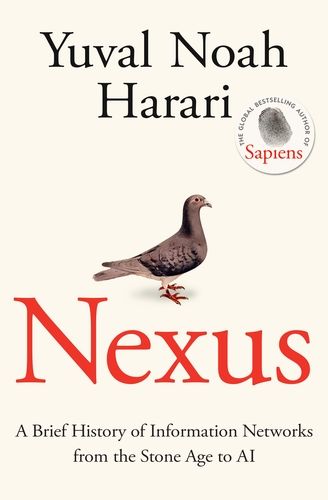
History
Society
Politics
Autocracy, Inc. Book Summary
Anne Applebaum
In "Autocracy, Inc.," Anne Applebaum exposes the global web of dictators and their enablers who have formed a corrupt, mutually-supporting network to undermine democracy, repress their citizens, and rewrite the rules of international politics in their favor.
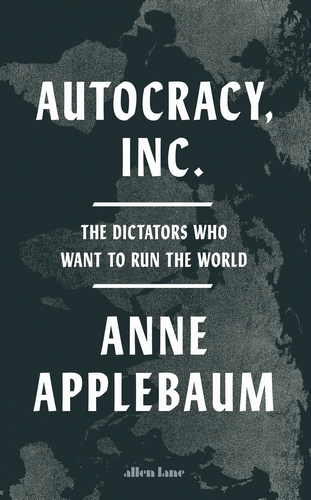
Technology
History
Economics
Chip War Book Summary
Chris Miller
This book unveils the hidden battle for control of microchip technology, a struggle that will define the future of the global economy and the balance of power between the US and China.
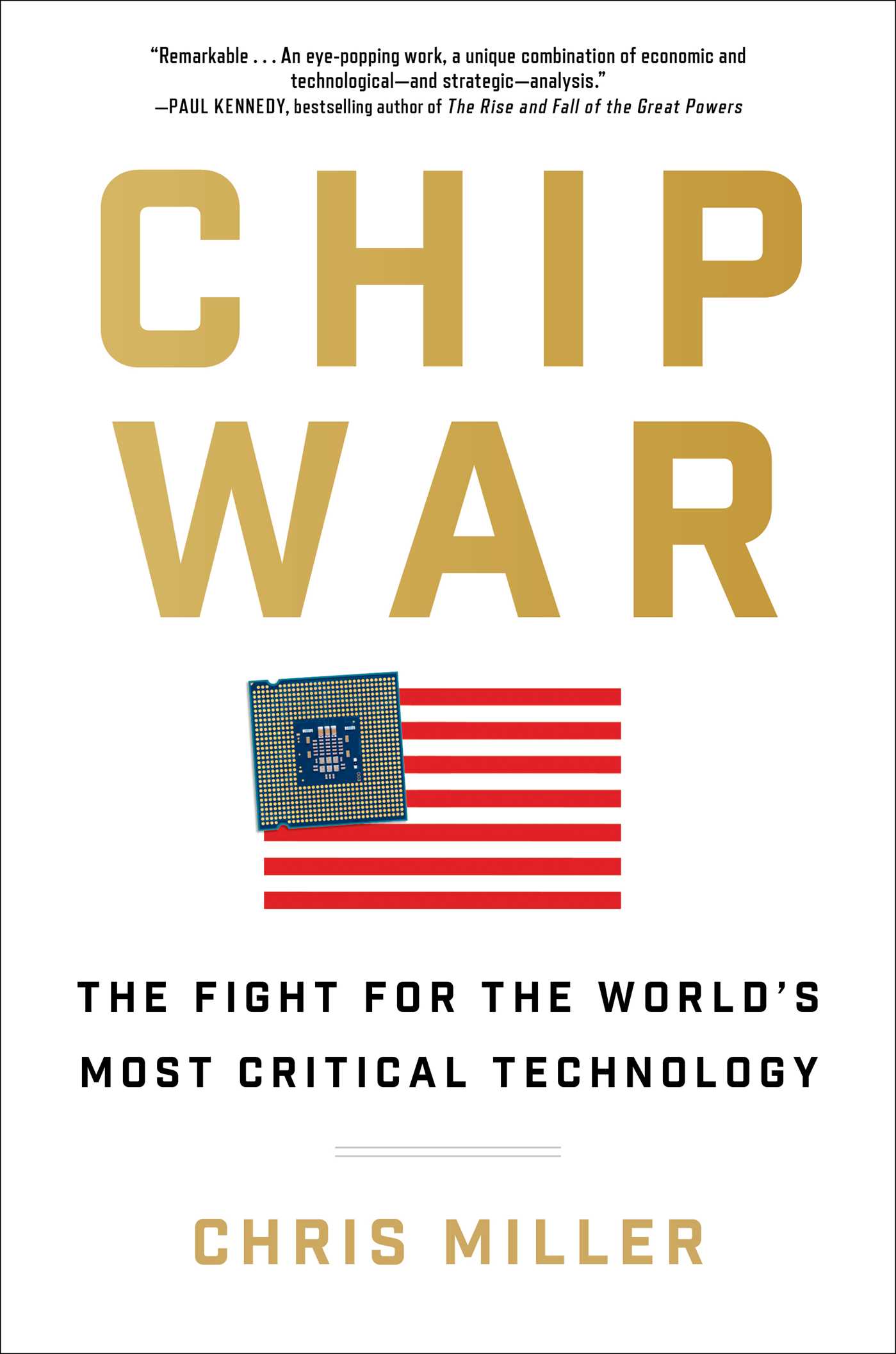
Nature
History
Climate Change
The Sixth Extinction Book Summary
Elizabeth Kolbert
In "The Sixth Extinction," Elizabeth Kolbert takes us on a riveting journey through the tumultuous history of life on Earth, revealing how human activity is driving a catastrophic modern extinction event that may ultimately imperil our own survival.
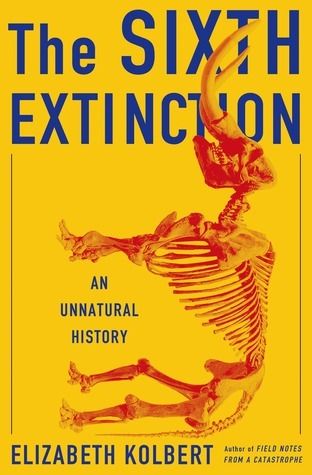
Same as Ever Book Summary
Morgan Housel
"Same as Ever" reveals the surprising truth: while technology and society evolve at breakneck speed, our core behaviors and motivations remain remarkably unchanged. Discover the timeless lessons of human nature that hold the key to navigating an unpredictable future.
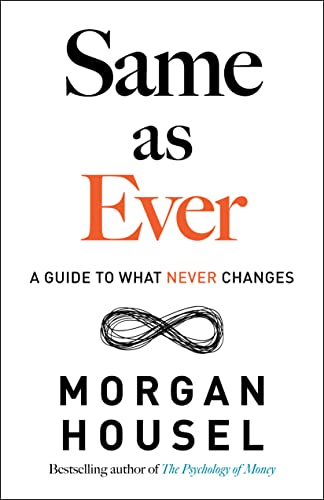
History
Politics
Philosophy
On Freedom Book Summary
Timothy Snyder
In "On Freedom," Timothy Snyder argues that true freedom is not simply the absence of barriers, but the positive presence of the conditions and capabilities that allow individuals to make meaningful choices, realized through the five interdependent forms of sovereignty, unpredictability, mobility, factuality, and solidarity.
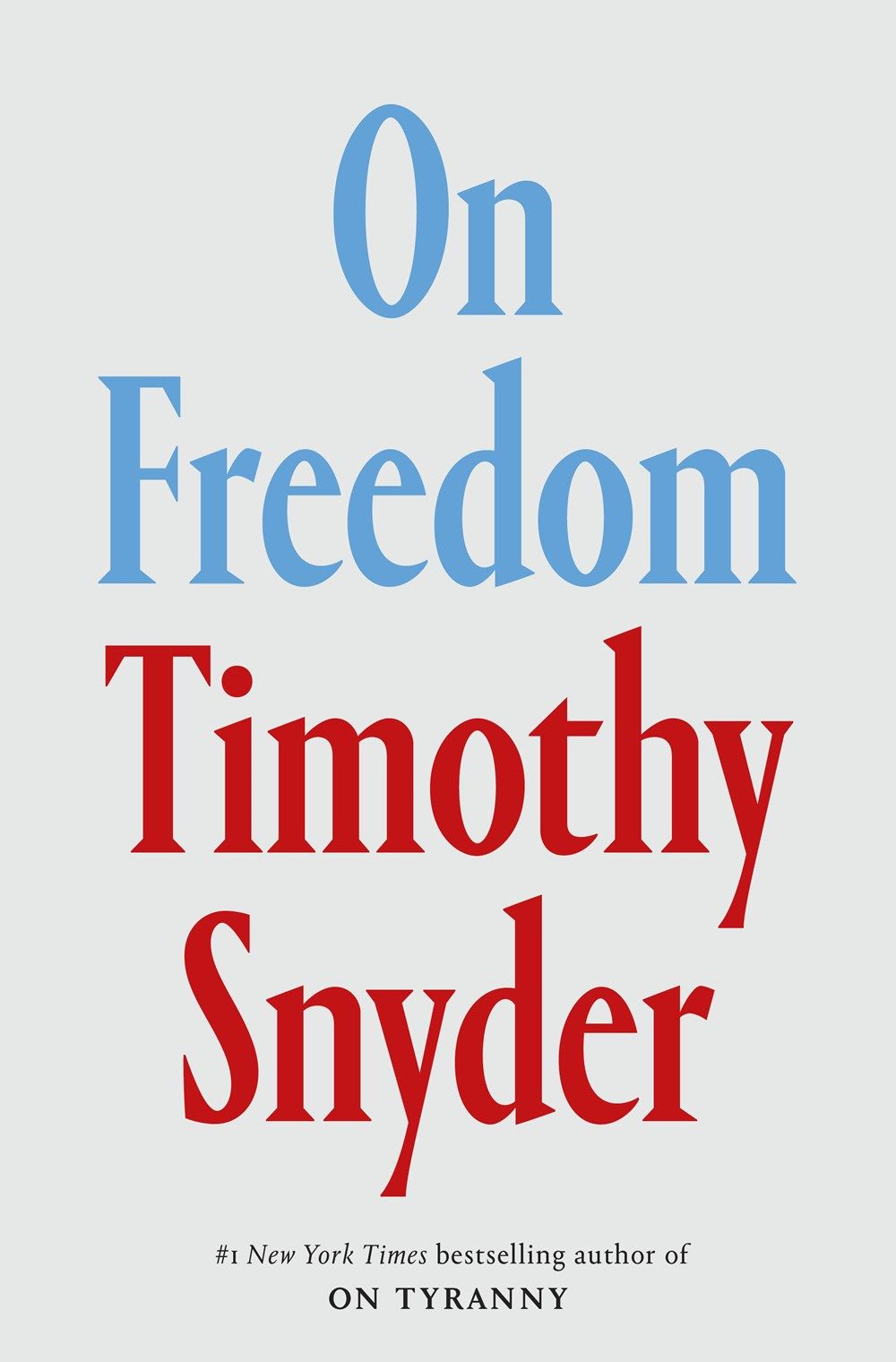
Economics
Society
History
Heuristics
Factulness Book Summary
Hans Rosling
Factfulness by Hans Rosling reveals the ten instincts that distort our perspective on the world, and provides a fact-based framework for understanding global progress and thinking more clearly about the future.

Medicine
Science
History
Society
Everything is Tuberculosis Book Summary
John Green
Tuberculosis has been entwined with humanity for millennia. Once romanticized as a malady of poets, today tuberculosis is a disease of poverty that walks the trails of injustice and inequity we blazed for it.

Sociology
History
Humanity
21 Lessons for the 21st Century Book Summary
Yuval Noah Harari
In "21 Lessons for the 21st Century", Yuval Noah Harari explores the most pressing challenges and opportunities of our time, offering insights on how to navigate a rapidly changing world shaped by technological disruption, political upheaval, and existential uncertainty.
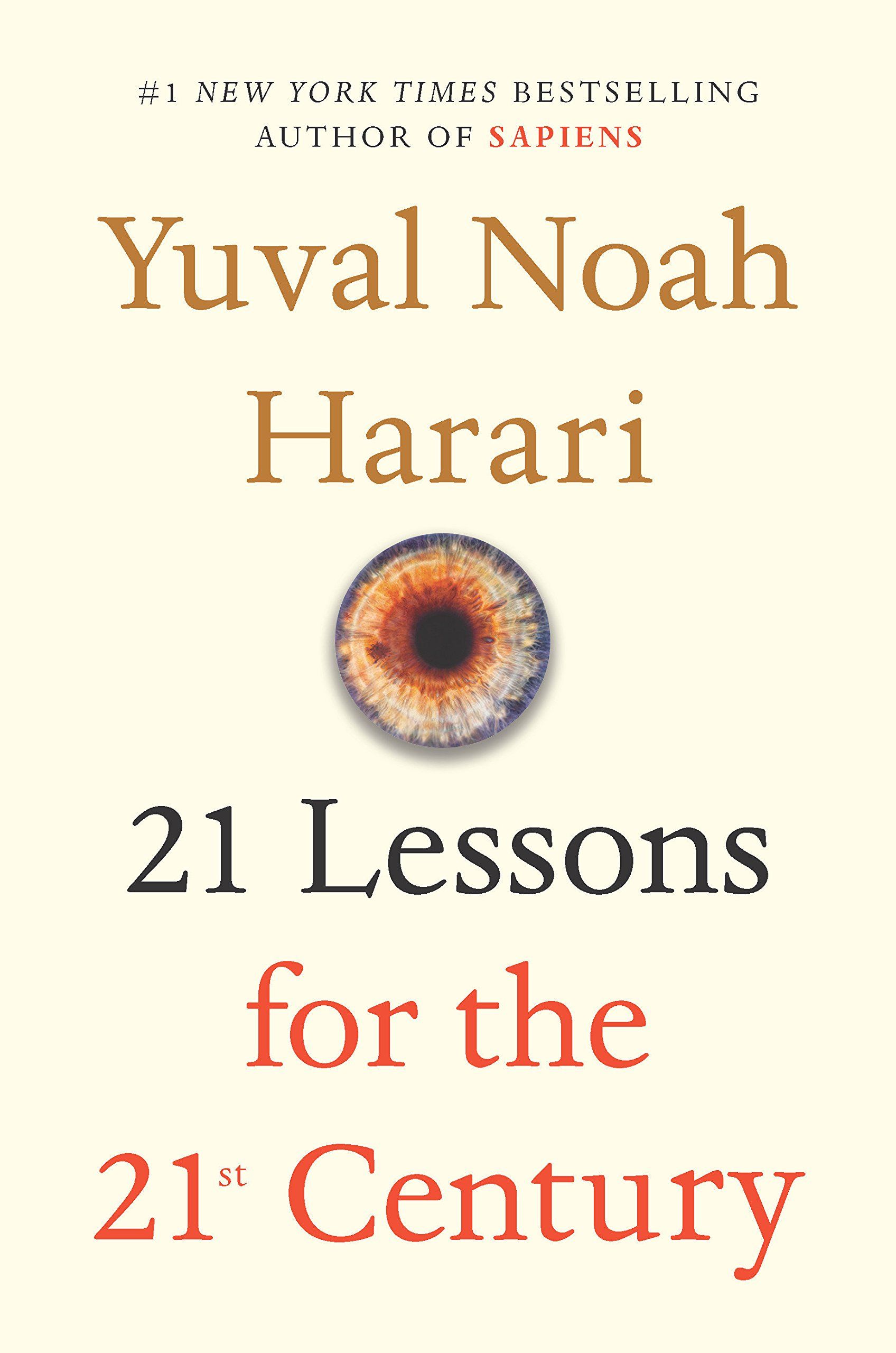
History
Economics
Politics
Globalization
Finance
Principles For Dealing With the Changing World Order Book Summary
Ray Dalio
Ray Dalio draws on historical patterns to provide a thought-provoking framework for understanding the cycles of rise and decline of nations, currencies, and markets, offering invaluable insights for investors and leaders navigating the complex dynamics shaping our future.
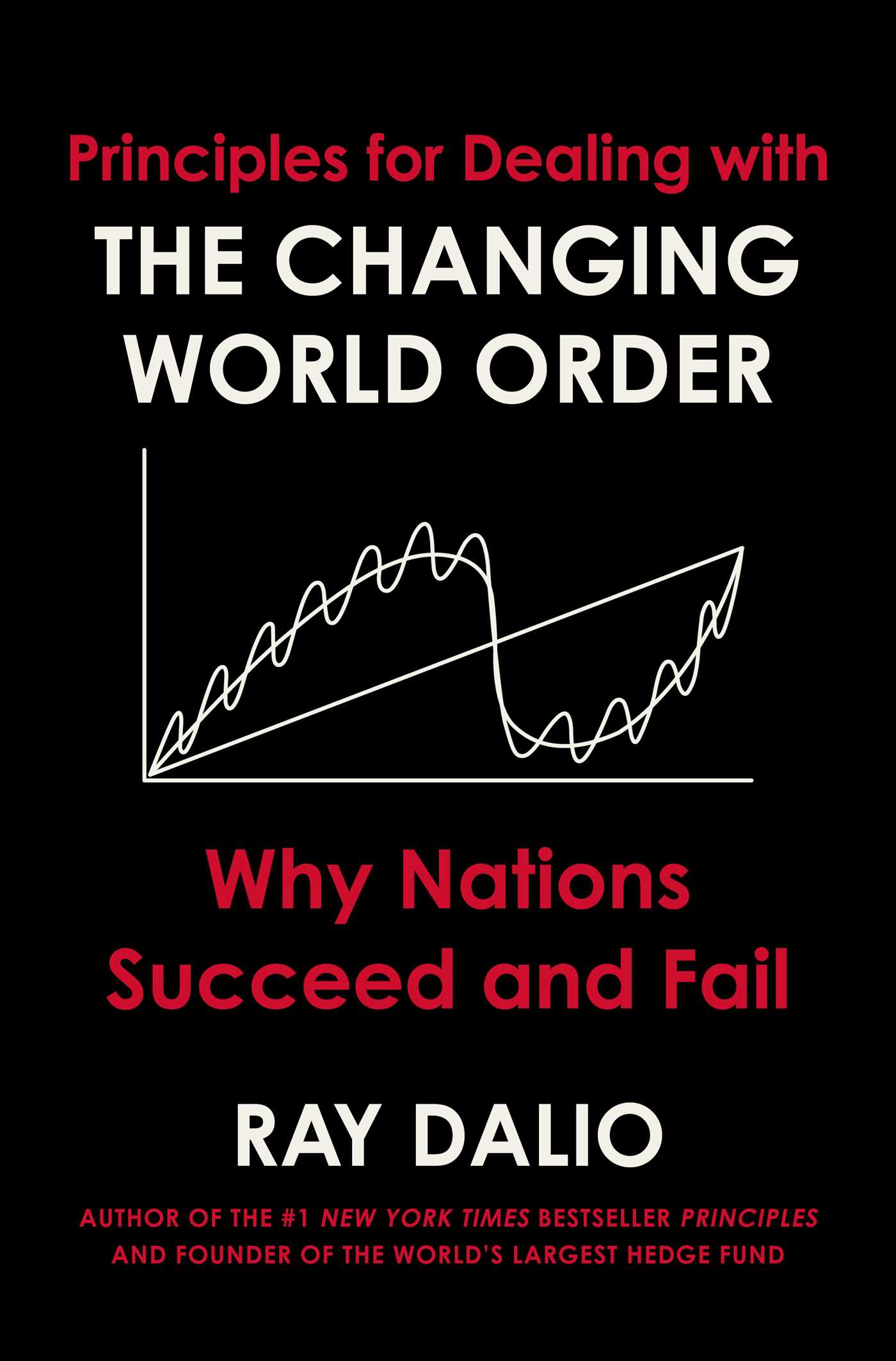
Language
Society
Culture
Cultish Book Summary
Amanda Montell
In "Cultish," Amanda Montell explores the fascinating world of cults and how their persuasive language and techniques permeate our everyday lives, from religious sects to fitness trends to multi-level marketing schemes.

History
Innovation
Science
Where Good Ideas Come From Book Summary
Steven Johnson
Steven Johnson argues that breakthrough innovations arise from connected environments that enable the serendipitous collision of slow hunches, happy accidents, and novel combinations of existing ideas, rather than isolated eureka moments of lone genius.
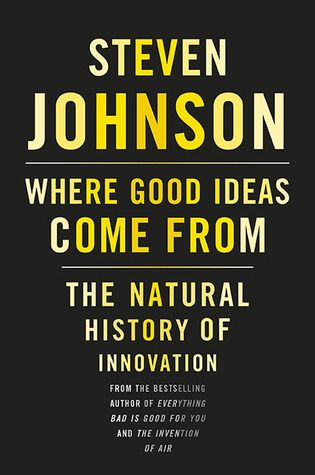
History
Society
Economics
Guns, Germs and Steel Book Summary
Jared Diamond
In Guns, Germs, and Steel, Jared Diamond argues that the fates of human societies across history have been shaped not by innate differences between peoples, but by environmental differences in the wild plant and animal species available for domestication on each continent.
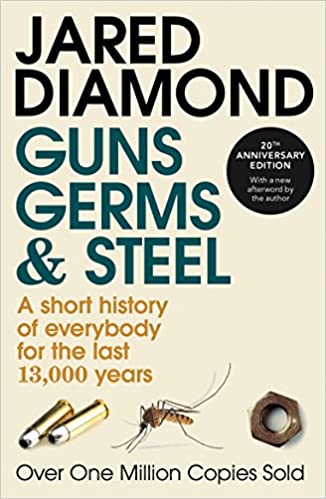
History
Politics
Philosophy
On Tyranny Book Summary
Timothy Snyder
In "On Tyranny," Timothy Snyder draws urgent lessons from the 20th century's bitter experience with tyranny to equip ordinary citizens today with the tools to recognize encroaching authoritarianism and fight back before it's too late.
